Lukang is well known for its abundance of old temples. Longshan Temple preserves its mid-19th-century style and attractive garden. Then there’s the ever-crowded, ever-noisy Lukang Mazu Temple, famous as a stop along the Dajia Mazu Pilgrimage. Away from the bustling town center is another temple dedicated to Mazu, but unlike any other temple in Taiwan, this one is made almost entirely of glass.
Not only is this temple’s construction materials rather unique, so too is its location. As I cycled out on a YouBike from Lukang’s town center, I thought Google must surely be leading me astray. I was on the man-made island on the west side of Lukang, surrounded by large factory buildings, pedaling down a wide empty road that was clearly designed for large truck traffic. I’d seen temples in town centers and among farms in rural areas, but never in such bleak surroundings as this. After a 20-minute ride, however, the temple came into view next to the much larger Taiwan Glass Gallery, and I parked my bike.
Taking Bus 6936 to the Taiwan Glass Gallery stop is another way to reach the temple. The bus departs from the Taichung HSR nine times a day (12 on weekends) and can also be caught at the Changhua TRA station or in Lukang by the stadium. Having your own scooter or car is certainly the easiest way to get here. However you arrive, this glass-themed area makes for an interesting half-day excursion and is worth the effort if you’re already in the vicinity of Lukang.
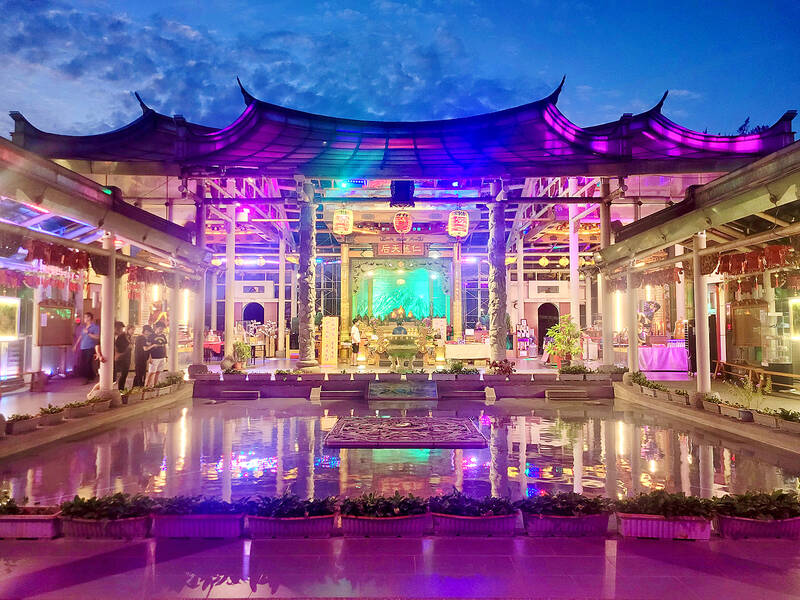
Photo: Tyler Cottenie
THE TAIWAN GLASS GALLERY
As the glass temple is best viewed at night, I made my way over the gravel plaza (even the gravel contains worn pieces of glass) to the Taiwan Glass Gallery (台灣玻璃館) first. There are several distinct shops inside selling decorative blown glass ornaments, as well as ordinary household items made of glass like drinking glasses, coffee pots and vases, sold at ordinary prices. Imagine a cross between an art gallery and an IKEA and you’ll understand what this place feels like; there’s even a cafeteria.
According to the Tourism Administration, local artists are able to display their works here free of charge. There are carefully crafted smaller ornaments mimicking nature, small trinkets to take home as souvenirs, and much larger pieces like a Taipei 101 made of glass and a bridge over a glass river with fish. On the day I visited, I was able to watch an artist in the process of making glass ornaments right in front of one of the displays.
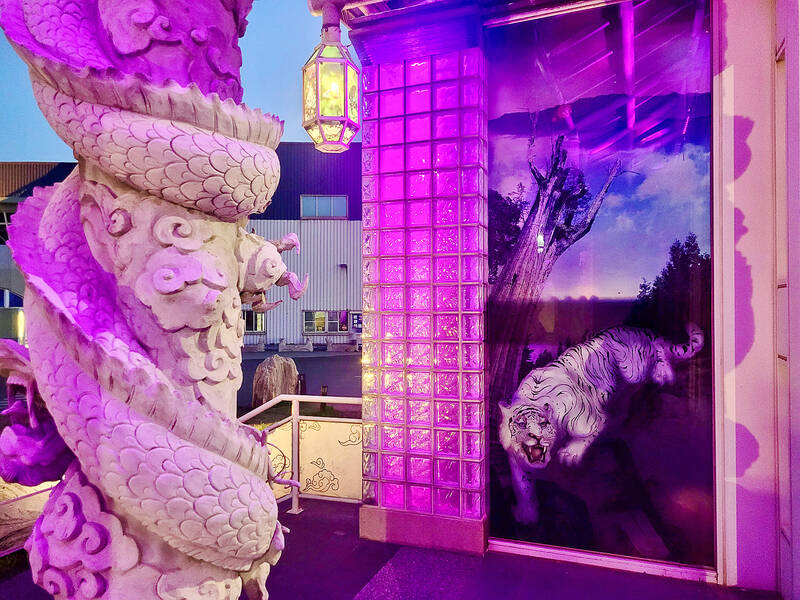
Photo: Tyler Cottenie
If shopping isn’t your thing there are still two other good reasons to come here. In a small building just behind the main gallery building, there is a shop where guests are guided through the process of making their own glass products. This is a time and labor-intensive process so the cost is approximately NT$1,500 per person, but if you’ve always wanted to try real glass-blowing, this is the place to do it. Back inside the main gallery is my favorite part of the visit here: the Golden Tunnel (黃金隧道).
A GLASS MAZE
Entrance to the Golden Tunnel (more like a funhouse hall of mirrors than a tunnel) costs NT$150 and is well worth it. The entrance includes a small gift (two stemless wine glasses) and a pair of locally made white-and-blue flip-flops. The flip-flops must be worn inside the Golden Tunnel, as well as a pair of cotton gloves (provided), in order to protect the glass from scratches and smudges.
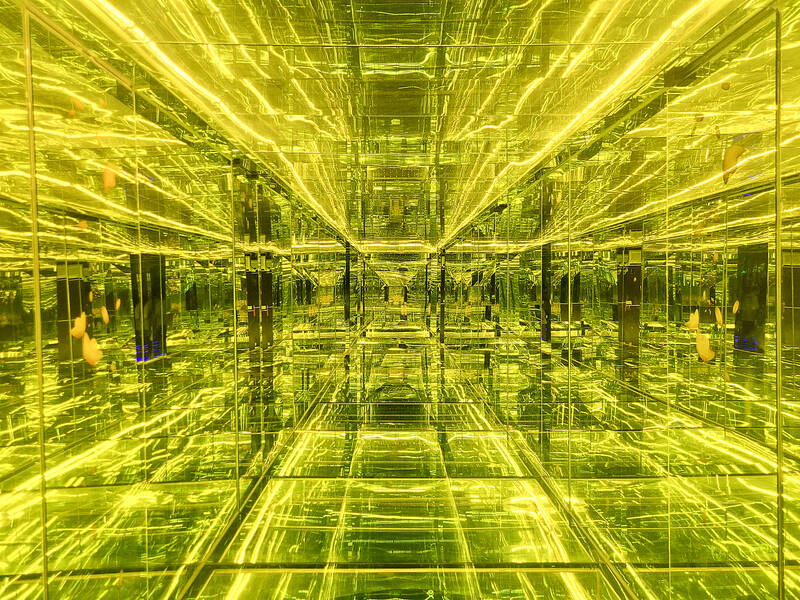
Photo: Tyler Cottenie
Stepping inside, my initial impression was how perfectly clean and transparent all the glass was, so much so that I truly could not tell which way to walk without running into a barrier. Most of the time I had to feel my way along the glass, waiting for a break in the wall. The colorful lighting makes the atmosphere inside rather otherworldly and the way it reflects gives a sense of brightness toward infinity in all directions. As I walked through one long straight section with yellow lighting — from which the attraction must get its name — only my outstretched hand stopped me from running into the end of the seemingly infinite tunnel.
As I rounded another corner, the illusion grew even greater when I noticed an open pit. I could see down to what looked like another two floors below me and my brain wouldn’t let my body move forward here as it seemed I would fall straight down. There was something that could be a transparent floor in front of me, but could also just be a reflection. Only after careful prodding with my foot onto what was actually solid glass but looked like empty space did I dare venture out.
The attraction is not meant to be a maze but it is extremely disorienting being inside and at one point I wasn’t sure if I was retracing my steps or moving through to a new area. As I went back and forth looking (feeling) for the correct way forward, an employee suddenly appeared around the corner. He asked if I was lost and told me that it happens to several people every day. I pointed to where I was planning to go, he nodded his approval, and I carried on, eventually making my way through to the exit.
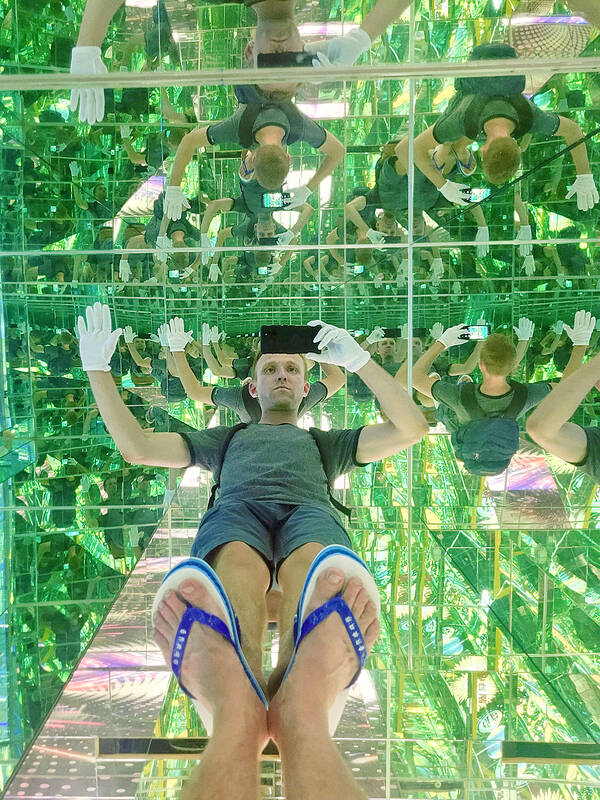
Photo: Tyler Cottenie
The entire attraction occupies very little floor space, but my 15 minutes inside felt like I had covered a vast area. It’s a cheap thrill, it’s well maintained and you get a couple of useful souvenirs out of it, so do check it out if you visit the Glass Gallery.
THE GLASS TEMPLE
If you’ve timed everything right, your visit to the Glass Gallery will finish around sunset. Now is the time to visit the adjacent temple dedicated to Mazu, Taiwan Husheng Temple (台灣護聖宮). It’s quite new, as temples go, having only opened in 2012. Apart from the steel frame, stone floor and wooden ornamentation, the temple is mostly glass. At night, the temple’s lighting shines through the glass walls and roof making the whole structure glow with myriad colors. The shallow pool in the central courtyard reflects these colors, further amplifying the effect.
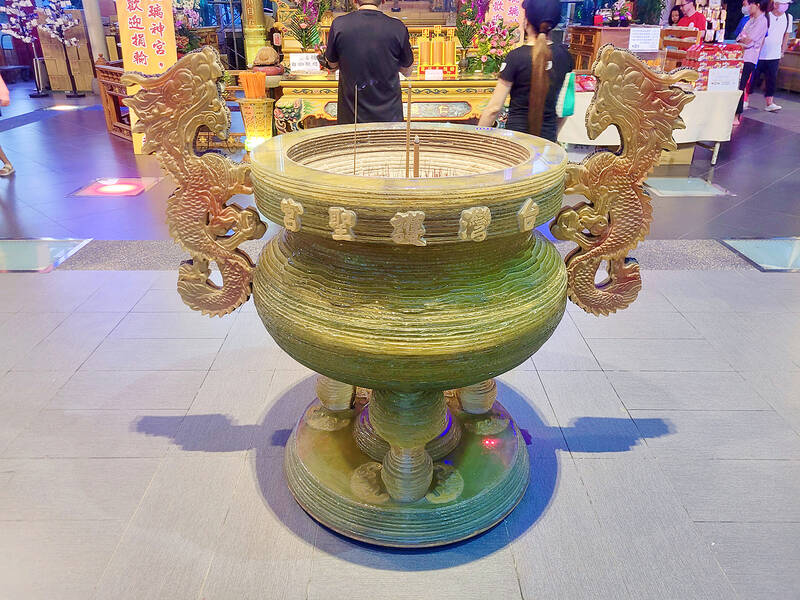
Photo: Tyler Cottenie
Even before entering, the contrast with ordinary temples is apparent. Beautiful glass lanterns with wildlife painted on them hang above the entrance, which features painted deities similar to other temples but on sliding glass doors. The long strip of decorative panels above the door, also common in other temples, is made of glass, making the paintings on them much more prominent. Inside, the altar features a glass mountain scene, glass deities and an incense burner made of glass.
Along the walls is a 12-meter-long painting on glass, inspired by Along the River During Qingming Festival but far eclipsing it in length. Dubbed Wonderful Taiwan in English (台灣豐韻圖), it gives viewers a view of the entire length of Taiwan’s coastline with important locations marked like Sun Moon Lake, the Xiluo Bridge, Hualien’s Qingshui Cliffs and, of course, the glass temple itself. This impressive work took the artist three years to complete but costs nothing to view inside the temple.
Recent renovations to the temple’s lighting system are scheduled for completion this Sunday, so any day after Christmas is a great time to check out this unique sight.
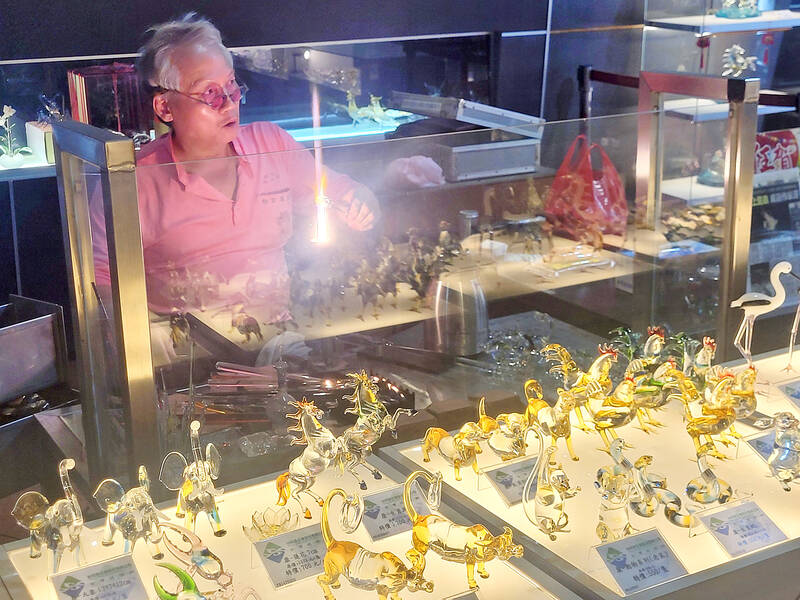
Photo: Tyler Cottenie

Photo: Tyler Cottenie
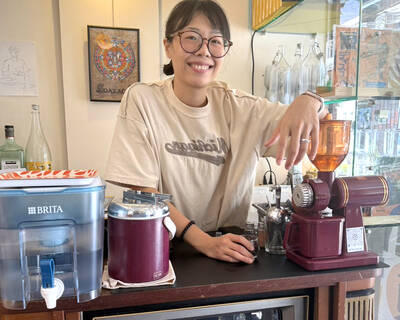
Cheng Ching-hsiang (鄭青祥) turned a small triangle of concrete jammed between two old shops into a cool little bar called 9dimension. In front of the shop, a steampunk-like structure was welded by himself to serve as a booth where he prepares cocktails. “Yancheng used to be just old people,” he says, “but now young people are coming and creating the New Yancheng.” Around the corner, Yu Hsiu-jao (饒毓琇), opened Tiny Cafe. True to its name, it is the size of a cupboard and serves cold-brewed coffee. “Small shops are so special and have personality,” she says, “people come to Yancheng to find such treasures.” She
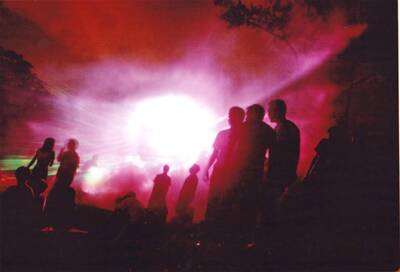
In July of 1995, a group of local DJs began posting an event flyer around Taipei. It was cheaply photocopied and nearly all in English, with a hand-drawn map on the back and, on the front, a big red hand print alongside one prominent line of text, “Finally… THE PARTY.” The map led to a remote floodplain in Taipei County (now New Taipei City) just across the Tamsui River from Taipei. The organizers got permission from no one. They just drove up in a blue Taiwanese pickup truck, set up a generator, two speakers, two turntables and a mixer. They
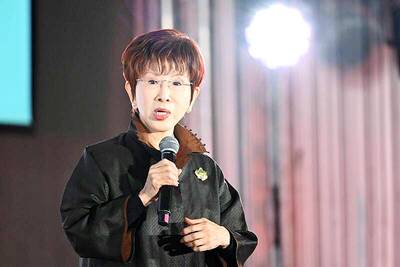
Former Chinese Nationalist Party (KMT) chairwoman Hung Hsiu-chu’s (洪秀柱) attendance at the Chinese Communist Party’s (CPP) “Chinese People’s War of Resistance Against Japanese Aggression and the World Anti-Fascist War” parade in Beijing is infuriating, embarrassing and insulting to nearly everyone in Taiwan, and Taiwan’s friends and allies. She is also ripping off bandages and pouring salt into old wounds. In the process she managed to tie both the KMT and the Democratic Progressive Party (DPP) into uncomfortable knots. The KMT continues to honor their heroic fighters, who defended China against the invading Japanese Empire, which inflicted unimaginable horrors on the

Hannah Liao (廖宸萱) recalls the harassment she experienced on dating apps, an experience that left her frightened and disgusted. “I’ve tried some voice-based dating apps,” the 30-year-old says. “Right away, some guys would say things like, ‘Wanna talk dirty?’ or ‘Wanna suck my d**k?’” she says. Liao’s story is not unique. Ministry of Health and Welfare statistics show a more than 50 percent rise in sexual assault cases related to online encounters over the past five years. In 2023 alone, women comprised 7,698 of the 9,413 reported victims. Faced with a dating landscape that can feel more predatory than promising, many in